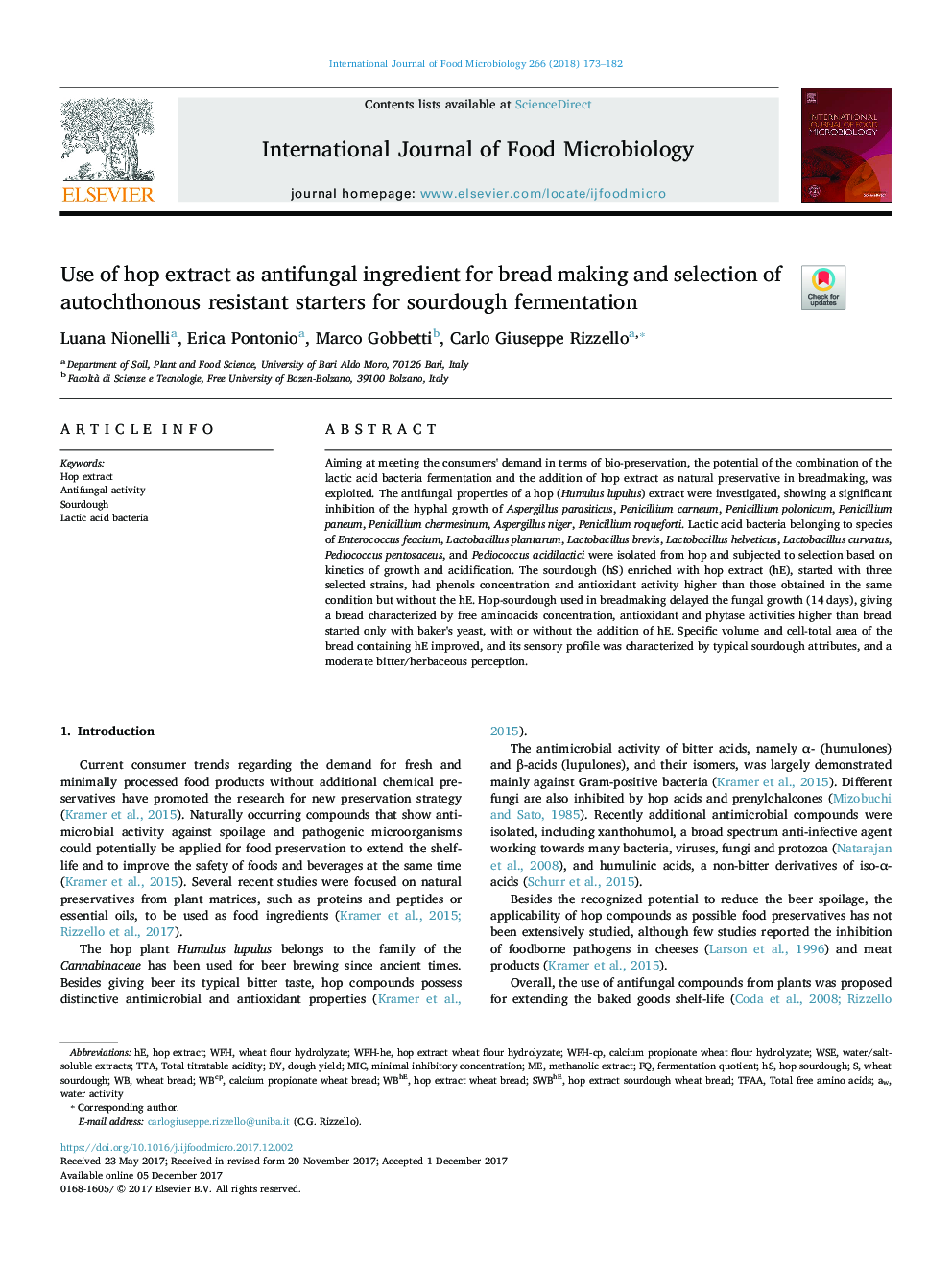| کد مقاله | کد نشریه | سال انتشار | مقاله انگلیسی | نسخه تمام متن |
|---|---|---|---|---|
| 8844323 | 1616517 | 2018 | 10 صفحه PDF | دانلود رایگان |
عنوان انگلیسی مقاله ISI
Use of hop extract as antifungal ingredient for bread making and selection of autochthonous resistant starters for sourdough fermentation
ترجمه فارسی عنوان
استفاده از عصاره برگ به عنوان عنصر ضد قارچ برای ساخت نان و انتخاب آغازگرهای ضدقارچی برای تخمیر خمیر
دانلود مقاله + سفارش ترجمه
دانلود مقاله ISI انگلیسی
رایگان برای ایرانیان
کلمات کلیدی
MICTTAWFHTFAAWSEHop extractLactic acid bacteria - باکتریهای اسیدلاکتیکMinimal inhibitory concentration - حداقل غلظت مهار کنندهMethanolic extract - عصاره متانولیDough yield - عملکرد خمیرWater activity - فعالیت آبیAntifungal activity - فعالیت ضد قارچیTotal free amino acids - مجموع اسیدهای آمینه آزادSourdough - نان خمیر ترشWheat bread - نان گندمtotal titratable acidity - کل اسیدیته تیتراژر
موضوعات مرتبط
علوم زیستی و بیوفناوری
علوم کشاورزی و بیولوژیک
دانش تغذیه
چکیده انگلیسی
Aiming at meeting the consumers' demand in terms of bio-preservation, the potential of the combination of the lactic acid bacteria fermentation and the addition of hop extract as natural preservative in breadmaking, was exploited. The antifungal properties of a hop (Humulus lupulus) extract were investigated, showing a significant inhibition of the hyphal growth of Aspergillus parasiticus, Penicillium carneum, Penicillium polonicum, Penicillium paneum, Penicillium chermesinum, Aspergillus niger, Penicillium roqueforti. Lactic acid bacteria belonging to species of Enterococcus feacium, Lactobacillus plantarum, Lactobacillus brevis, Lactobacillus helveticus, Lactobacillus curvatus, Pediococcus pentosaceus, and Pediococcus acidilactici were isolated from hop and subjected to selection based on kinetics of growth and acidification. The sourdough (hS) enriched with hop extract (hE), started with three selected strains, had phenols concentration and antioxidant activity higher than those obtained in the same condition but without the hE. Hop-sourdough used in breadmaking delayed the fungal growth (14Â days), giving a bread characterized by free aminoacids concentration, antioxidant and phytase activities higher than bread started only with baker's yeast, with or without the addition of hE. Specific volume and cell-total area of the bread containing hE improved, and its sensory profile was characterized by typical sourdough attributes, and a moderate bitter/herbaceous perception.
ناشر
Database: Elsevier - ScienceDirect (ساینس دایرکت)
Journal: International Journal of Food Microbiology - Volume 266, 2 February 2018, Pages 173-182
Journal: International Journal of Food Microbiology - Volume 266, 2 February 2018, Pages 173-182
نویسندگان
Luana Nionelli, Erica Pontonio, Marco Gobbetti, Carlo Giuseppe Rizzello,
